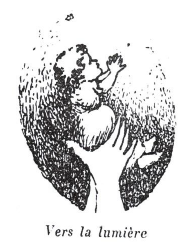Luminaries of Fin-de-si;cle France: Aesthetic, Scientific and Medical Cultures of Light, c. 1880-1930
CENTRE FOR THE HISTORY OF MEDICINE
SEMINAR SERIES 2009-2010 SPRING TERM |
Tuesday, 3rd November (Week 5)
5.00 pm – Ramphal Building Room R.014 |
Dr Tania Woloshyn (Richmond)
Luminaries of Fin-de-siècle France: Aesthetic, Scientific and Medical Cultures of Light, c. 1880-1930 |
 |
| This paper explores historical perceptions of light among French artists, physicians and scientist’s c.1880-1920. Art historians are aware that the Neo-Impressionists were familiar with the optical theories of Ogden Rood, Hermann von Helmholtz, Charles Henry, Michel Eugène Chevreul, and Charles Blanc. But so were physicians and other scientists, and this has not been significantly contextualised in art-historical literature. So too is the development of light therapeutics during fin-de-siècle France a little-explored dimension in the history of medicine. Phototherapy (the therapeutic application of artificial light) and heliotherapy (of natural light, namely sunlight) were considered to be new, modern natural therapies for invalids suffering from tuberculosis and chronic conditions like arthritis, and these treatments appear to have been available along France’s Southern coast from as early as the first decade of the twentieth century. Moreover, the visual culture that promoted, explained, and perpetuated these perceptions in the near-miraculous natural powers of light has been overlooked by art, medical and social historians. This paper therefore asks: how did fin-de-siècle artists, scientists, and physicians understand light – as a producer of colour, as a form of therapy, as integral to optical perception, or as a natural element to be manipulated by diverse modern technologies? |
|
 |
Centre for the History of Medicine
The University of Warwick
Coventry CV4 7AL United Kingdom
Tel: 024 76 572601
Fax: 024 76 523437
Email: Hist dot Med at warwick dot ac dot uk |
|